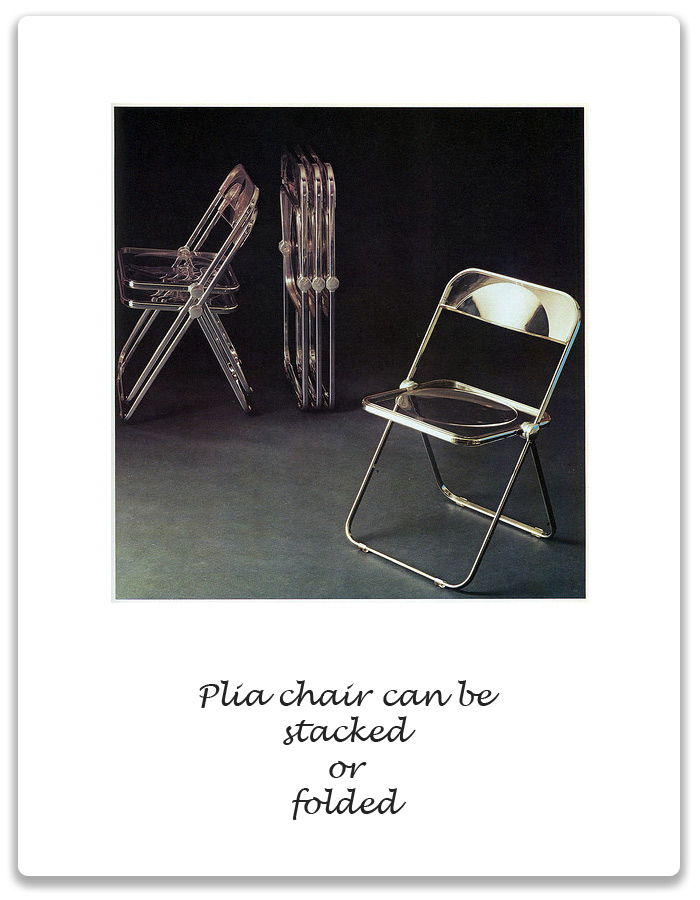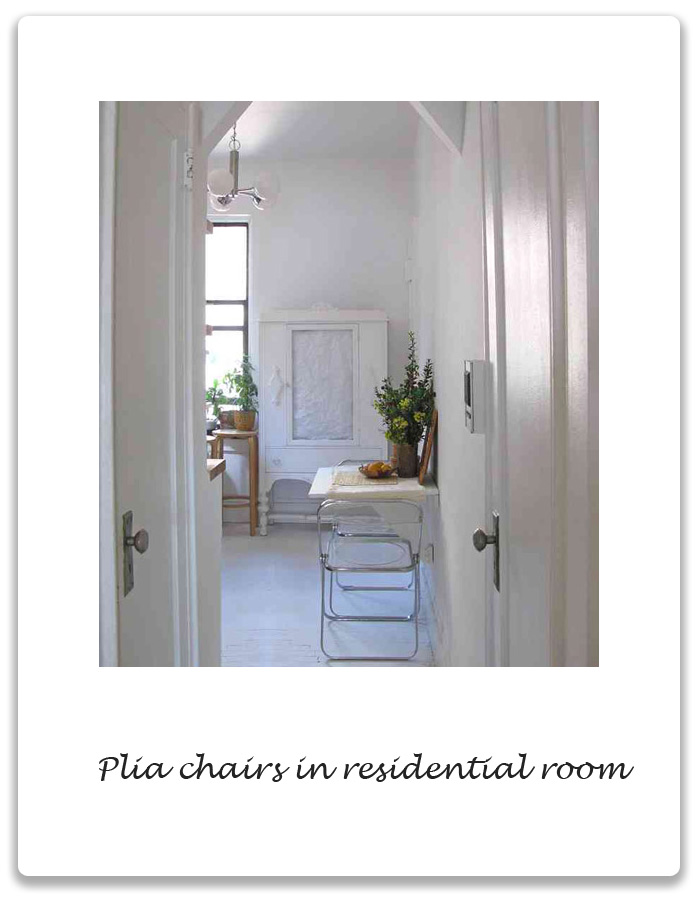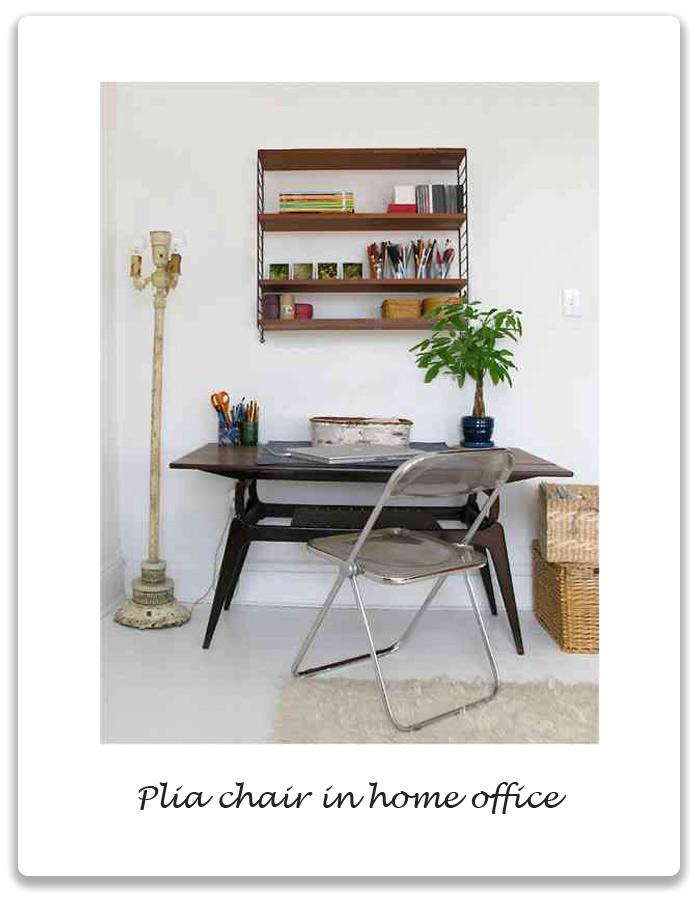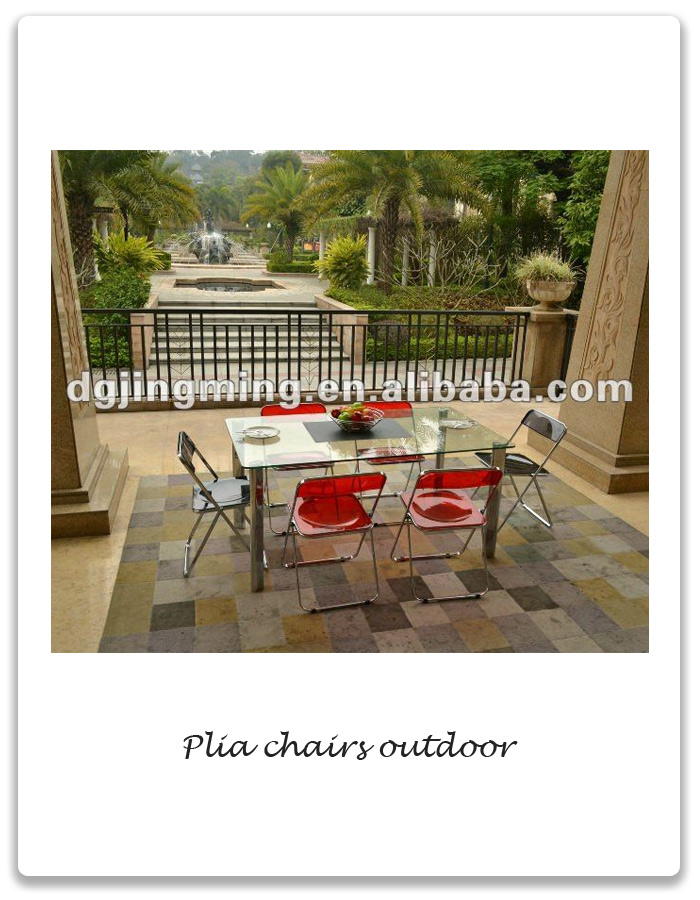1960’s: Plia Chair
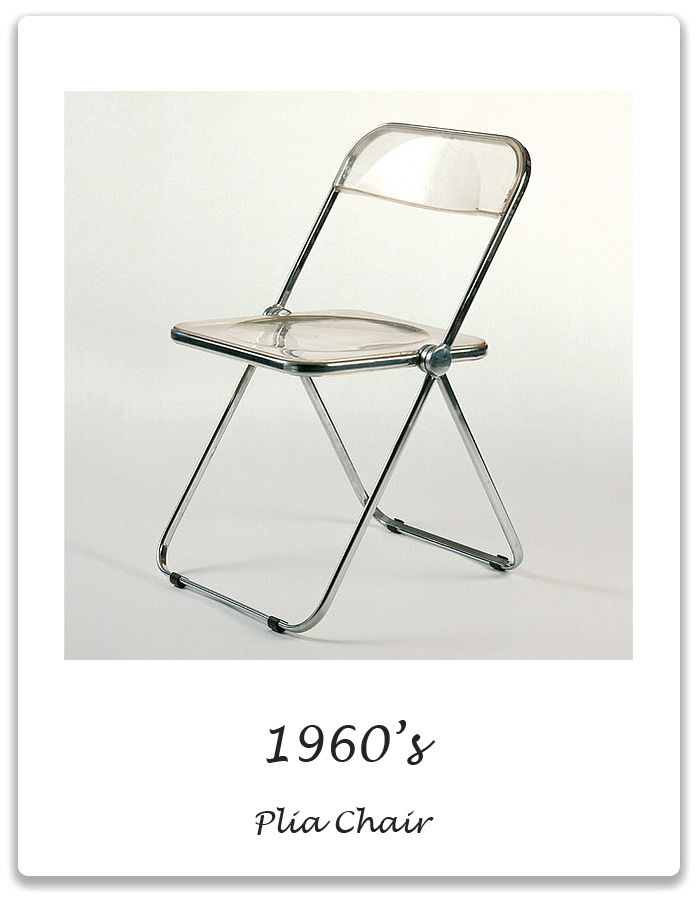
History
The Castelli Plia chair was designed in 1968. At that time it was a most innovative chair, with its lightness and precision. The Plia chair folds into a just 5-cm think rectangle, making it a perfect chair for storage. When it is folded, it can be hung on a wall on a hook that is already part of the design. Its folding mechanism was a complete novelty. Apart from folding, it is also a stackable chair. In 1971 the Plia chair was awarded the BIO 5 award at the Lyublyana Biennial. In 1973 it won the Gute Form prize of the Federal Republik of Germany.
Designed by
Giancarlo Piretti, an innovative Italian designer, born in Bologna in 1940.

Dimensions
Height 75cm, width 47cm, depth 50.5cm, seat height 45.5cm
Materials
Polished die-cast aluminum, oval tubular steel and cellidor plastic.
Elements and Principles
Form and Proportion. The form of Plia chair elements, its tubular frame and legs that create a rectangular structure are quite unique – the proportion of these elements allows them to be folded together into a very thin item, making it a uniquely innovative design.
Manufactured by
Anonima Castelli s.p.a., Ozzano, near Bologna, Italy.
Used by Designers
Plia chair is not a “feature” chair, it is more of a utility chair, taking the backstage position. It can be used both indoors and outdoor. Due to its contemporary look and material, it fits perfectly in contemporary interiors including residential rooms and patios, cafes, commercial spaces where lots of seating is requires, areas where temporary seating may may be required. Due to its transparent and non-obtrusive appearance, it can be used as the main seating in dining areas where the chairs are not going to be the feature items.
Replicas
Castelli has been manufacturing Plia chairs in large numbers. They sold over four million of these iconic chairs.
Also, other manufacturers have been producing replicas of the Plia chair, but it often is not called that, but it receives a more descriptive name, such as a “folding chair”. They come in a variety of colours, red and black being the most popular ones after the clear transparent version.
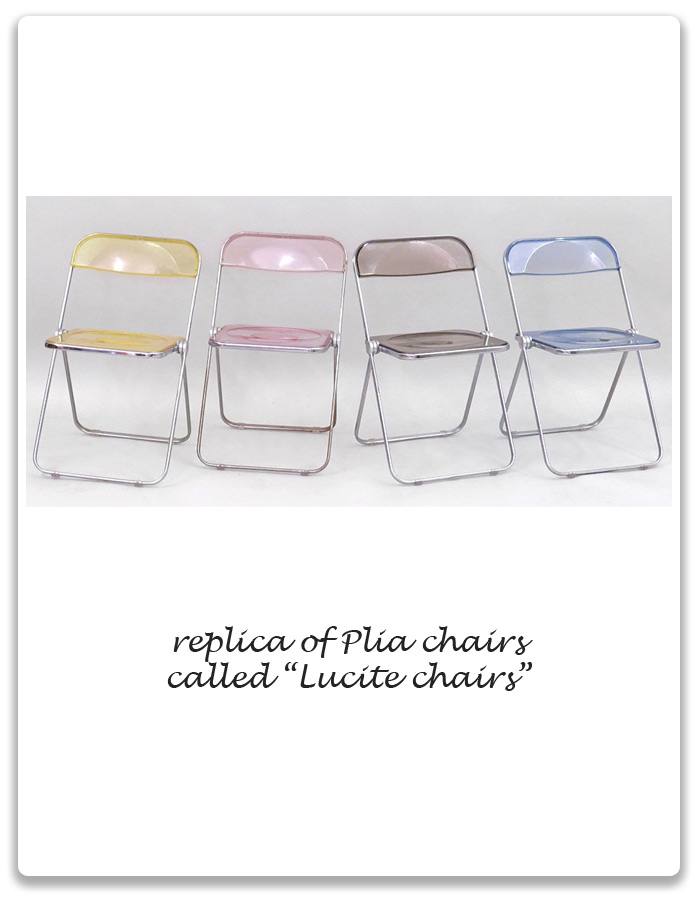
Contemporary interpretations and influences
Plia chair has inspired a wave of lightweight chairs that can be stackable and/or foldable. Ikea of Sweden is one of the many furniture designer and manufacturer companies worldwide that has produced a range of similar chairs.
Resources
http://www.design-museum.de/en/collection/100-masterpieces/detailseiten/plia-giancarlo-piretti.html
http://www.castelli1877.com/en/designer/giancarlo-piretti
http://www.alibaba.com/product-detail/metal-frame-and-plastic-seat-Folding_533299741.html
http://www.designsponge.com/2011/10/sneak-peek-jill-danyelle.html
https://www.liveauctioneers.com/item/20650500_group-of-four-lucite-folding-chairs

